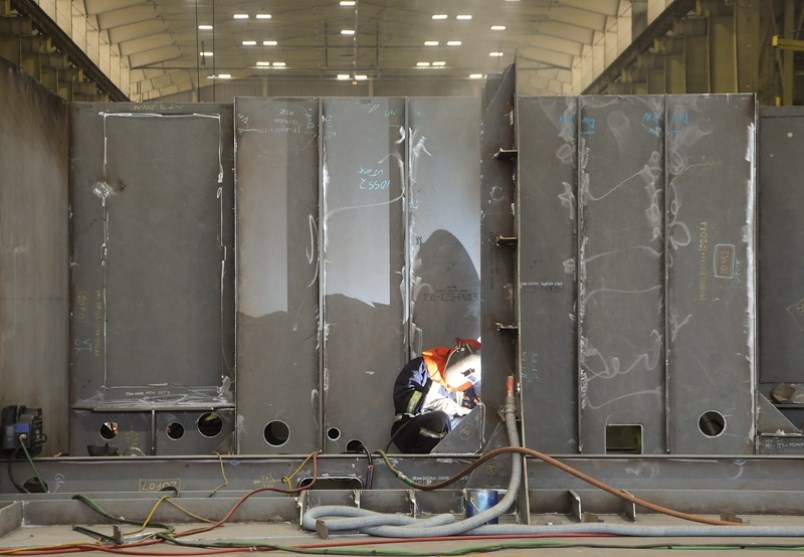For local shipbuilders, there’s good news and there’s bad news.
The good news: the first two Coast Guard vessels built by Seaspan are nearing completion and Ottawa recently announced Seaspan will be tapped to build 16 more.
The bad news: in the same announcement, Prime Minister Justin Trudeau said Ottawa is opening up the national shipbuilding program to a potential third shipbuilder, likely Davie Shipyard in Quebec. And that shipyard is likely in the running to build an icebreaker previously promised to Seaspan.
Following the announcement in Vancouver, the Coast Guard confirmed it is substituting the 80- to 90-metre multi-purpose vessels for a polar icebreaker in the government’s order book with Seaspan.
“The non-combat package is a challenging program of work, compounded by the construction of the large, one-off polar icebreaker,” a spokesman for the Coast Guard wrote in an email. “Therefore, Canada made the decision to substitute the one polar icebreaker with a long run of 16 multi-purpose vessels. Given the importance of icebreaking capacity, the government is exploring other options to ensure the polar (icebreaker) is built in the most efficient manner, but no decisions have been taken.”
North Vancouver MP Jonathan Wilkinson, who is also minister of fisheries and oceans, said local shipbuilders shouldn’t be concerned that Ottawa is substituting one project for another.
The ships being built by Seaspan will still be “the core of the future fleet of the Coast Guard,” said Wilkinson.
He said it makes a lot more sense for Seaspan to build multiple ships of a similar design than to build “one-off” ships like the icebreaker.
Wilkinson didn’t comment directly on whether the icebreaker will be built by Davie. “What we have said is there is a third shipyard that will be brought into the mix,” he said. “We haven’t delineated what that shipyard will work on.”
In an email to the North Shore News, a Coast Guard spokesman said a third shipyard is needed because current work will keep both Seaspan and Irving busy for the next 15 to 20 years and “their facilities cannot concurrently begin other construction projects. The government has pressing marine requirements and needs additional ships to be delivered in an earlier timeframe.”
Those changes shouldn’t be surprising, said Chris Madsen, a North Vancouver resident and professor at Canadian Forces College in Toronto, whose research includes shipbuilding and naval procurement.
“Davie is in a much better position to build (an icebreaker) on time,” he said. Icebreakers are the specialty of the Quebec shipyard and the ships cost less because their labour costs are much lower, he said.
“They are a very competitive shipyard.”
Davie has already provided Ottawa with an interim naval supply ship – which it is leasing to the government – while the government waits for Seaspan to build the massive joint support ships.
The Quebec shipyard has also been awarded a $610-million contract to build three “interim icebreakers” for the Coast Guard. The first of those was delivered May 30.
With a federal election looming, politics will also likely play a part in which shipyard builds the icebreaker, said Madsen. “Shipbuilding is a major employer in that part of Quebec, he said, noting about 2,500 people work at Davie.
Tim Page, vice-president of government relations for Seaspan, called Ottawa’s decision to open the shipbuilding program to a third shipyard “an unexpected and disappointing development.”
Page said that “effectively changes the playing field and rules of engagement” under which Seaspan and Irving Shipyards in Halifax were awarded agreements by Ottawa in 2011.
Page said the shipyard still needs to discuss the issue with Ottawa “on an urgent basis.”
On May 29, B.C.-based Seaspan also announced the opening of an Ottawa office as “evidence of Seaspan’s commitment to strengthen relationships with its government customers.”



